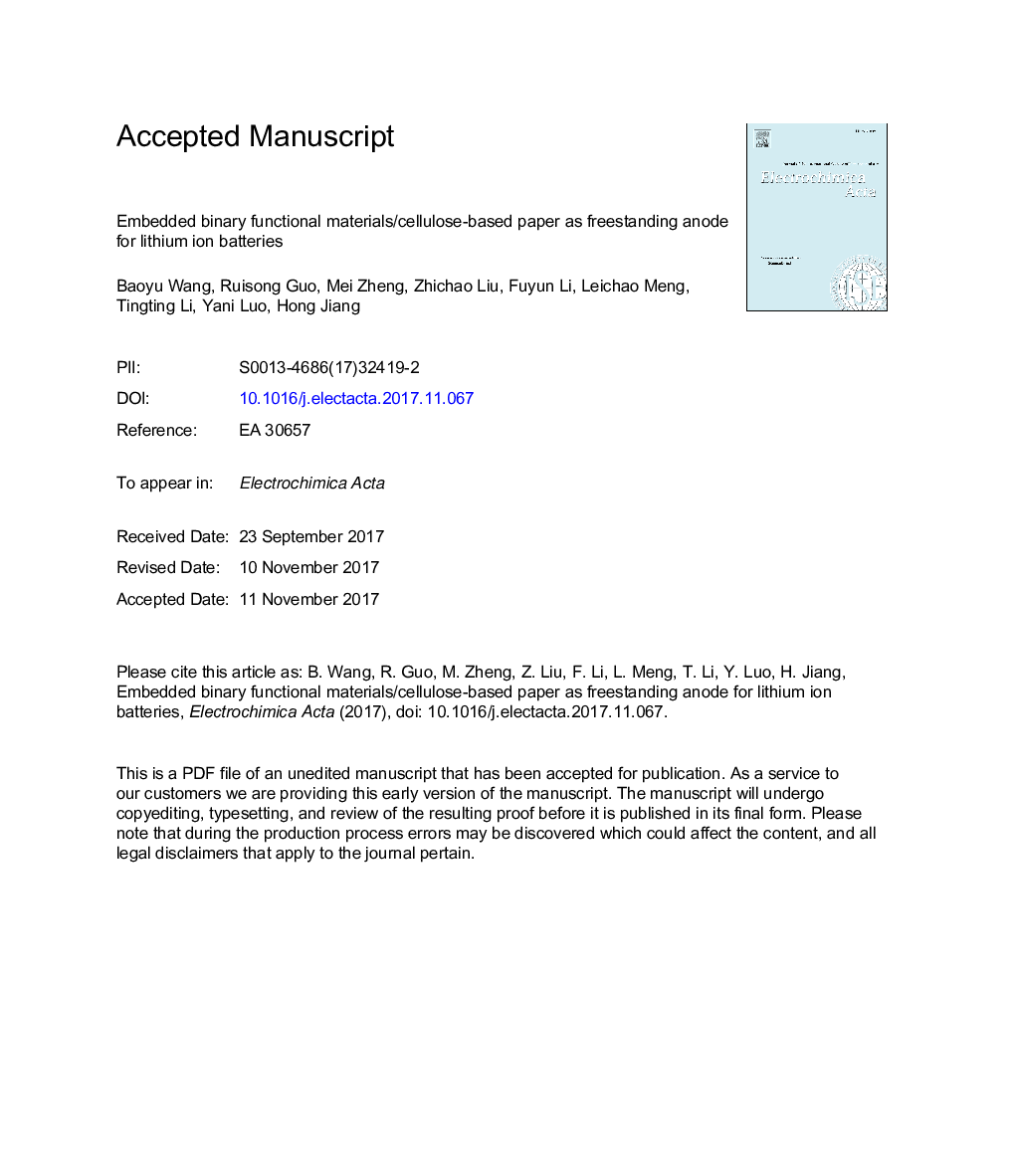| Article ID | Journal | Published Year | Pages | File Type |
|---|---|---|---|---|
| 6604620 | Electrochimica Acta | 2018 | 37 Pages |
Abstract
Cellulose paper-based energy storage devices have spurred significantly intrinsic advantages compared with the traditional batteries due to environmental benignity, recyclability and easy processing. In this work, the binary functional materials, which contains linear N-doped carbon nanotube (N-CNT, one-dimensional) and spherical C-coated MoS2 (MoS2@C, zero-dimensional), are embedded into the porous recycled paper (RP, two-dimensional) derived from wastepaper via a facile and low-cost vacuum filtration method, and then the N-CNT/MoS2@C/RP film (N-M-RP film) featuring a unique compacted “point-line-plane” structure is obtained. In favor of the synergistic effect of high-conductive N-CNT, high-capacity MoS2@C and porous RP network, the prepared freestanding N-M-RP film presents a high strength of 35.2 MPa and a comparably low sheet resistance of 127.39 Ω sqâ1, and as an anode material for LIBs, the N-M-R film delivers a high reversible capacity, good cycling performance, superior rate capability and excellent electrochemical kinetics. Besides, the synergistic effect of “point-line-plane” structure on the improved electrochemical performances is also investigated. All the results indicate that the N-M-RP film comprised of 0D-1D-2D materials could be a potential candidate as a freestanding anode for LIBs.
Related Topics
Physical Sciences and Engineering
Chemical Engineering
Chemical Engineering (General)
Authors
Baoyu Wang, Ruisong Guo, Mei Zheng, Zhichao Liu, Fuyun Li, Leichao Meng, Tingting Li, Yani Luo, Hong Jiang,
